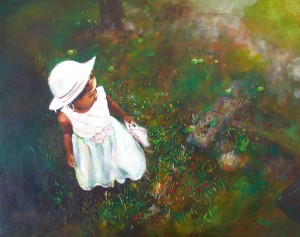I couldn't resist sharing this on my blog . . .
A delightful poster has been circulating on Facebook, and I am proud to share it here.
It is the brainchild of the slightly twisted minds at the College for Creative Studies in Detroit, MI, but the primary distributor seems to have been someone at the Philbrook Museum of Art, in Tulsa, OK. One of the places they posted it was the Association of Art Museum Directors (AAMD) Facebook page.
Of course, those of us who persist in making and/or teaching art also wince a bit, at the parallel drawn between what we do and illegal drugs.
Unfortunately, in my experience, there are people who actually feel approximately this negative, when they think of a young person in their life who might be "turning to a life of art."
The myth of the "starving artist" (popularized famously by the opera La Boheme, and still ruggedly persistent to this day) clouds people's minds.
True, a career in the arts is often difficult and challenging. Sometimes things actually don't work out.
But parents who try to "shield" their kids from dreams of working in the arts do them a massive disservice. I know many successful artists who work in a variety of art forms, and to be successful every one of them had to have talent, opportunity/luck--and a solid knowledge background.
You can't function as a high-performing professional if you don't know what you're doing. Parents and other well-meaning advisers who guide gifted students away from art are keeping them from learning the skills they need, to make their dreams become reality. In their effort to save their kids the pain of failure, they actually doom those kids to a lifetime of regret that they never had a real chance to reach for their dreams.
So, while I can laugh at the thought of doodling as a "gateway to illustration" . . . as with most humor, it's pain that makes it funny.
 |
| This poster from the College for Creative Studies has been making the rounds on Facebook, recently. |
It is the brainchild of the slightly twisted minds at the College for Creative Studies in Detroit, MI, but the primary distributor seems to have been someone at the Philbrook Museum of Art, in Tulsa, OK. One of the places they posted it was the Association of Art Museum Directors (AAMD) Facebook page.
Of course, those of us who persist in making and/or teaching art also wince a bit, at the parallel drawn between what we do and illegal drugs.
Unfortunately, in my experience, there are people who actually feel approximately this negative, when they think of a young person in their life who might be "turning to a life of art."
The myth of the "starving artist" (popularized famously by the opera La Boheme, and still ruggedly persistent to this day) clouds people's minds.
True, a career in the arts is often difficult and challenging. Sometimes things actually don't work out.
But parents who try to "shield" their kids from dreams of working in the arts do them a massive disservice. I know many successful artists who work in a variety of art forms, and to be successful every one of them had to have talent, opportunity/luck--and a solid knowledge background.
You can't function as a high-performing professional if you don't know what you're doing. Parents and other well-meaning advisers who guide gifted students away from art are keeping them from learning the skills they need, to make their dreams become reality. In their effort to save their kids the pain of failure, they actually doom those kids to a lifetime of regret that they never had a real chance to reach for their dreams.
So, while I can laugh at the thought of doodling as a "gateway to illustration" . . . as with most humor, it's pain that makes it funny.

















































